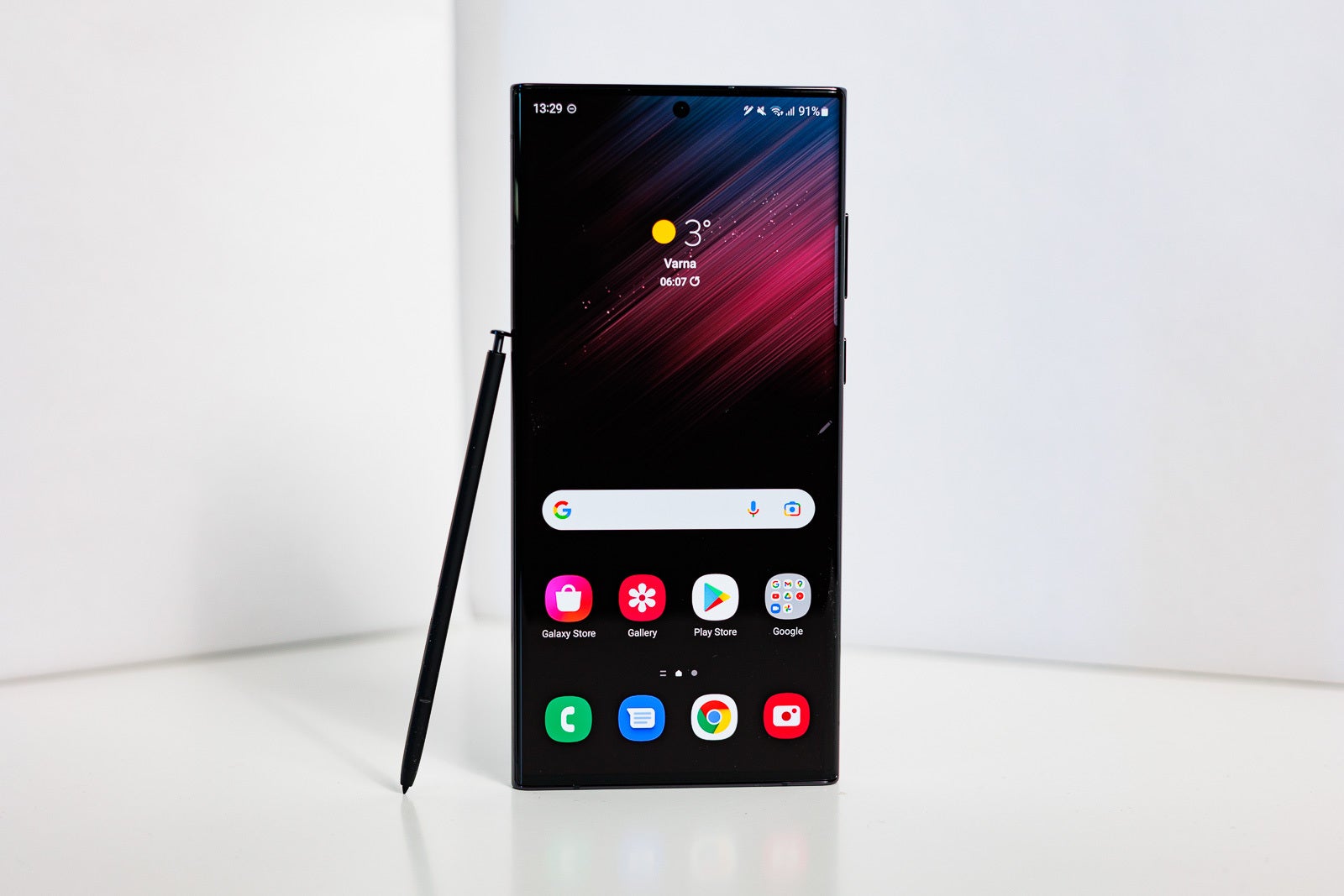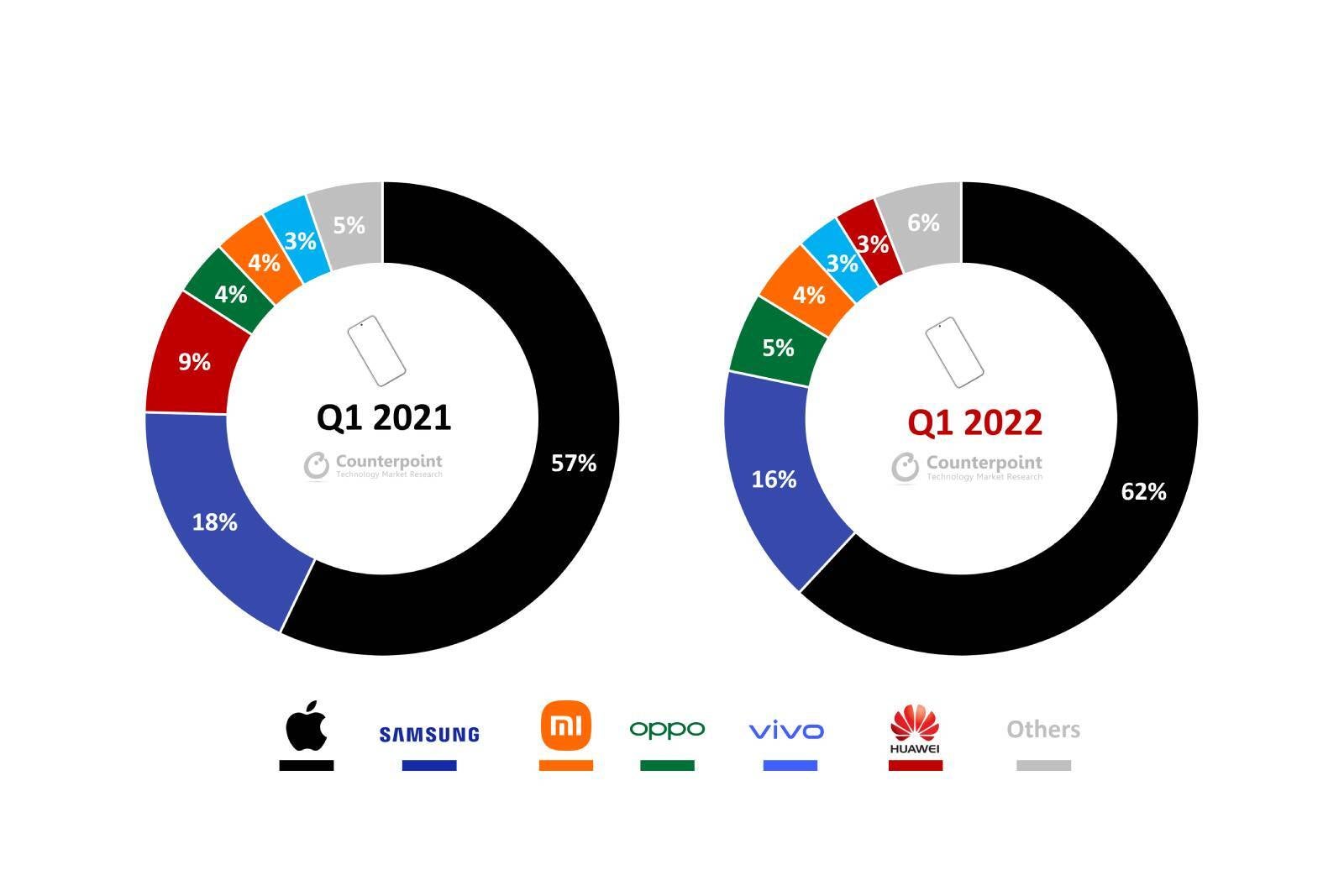Premium phones are more popular than ever and Apple’s destroying the competition
Almost two-thirds of all premium smartphones were iPhones
New data coming from a Counterpoint Research report reveals that Apple’s iPhone line accounted for an outstanding 62% of worldwide premium smartphone sales in the quarter ended March. In other words, close to two-thirds of every premium smartphone sold was an iPhone. A premium smartphone is classed as any device priced at $400 or above, meaning products like the Galaxy A53 5G and iPhone SE are included.Compared to Q1 2021 when the Cupertino giant was riding high on the iPhone 12 and 5G wave, Apple’s share is up five percentage points and the gap with rivals like Samsung and Xiaomi has only gotten wider.
So what do these numbers represent? For one, they mark the second consecutive quarter where Apple’s share is above 60%. They also represent the iPhone’s highest Q1 result since 2017, when the iPhone 7 was considered new, and the iPhone X was simply a rumor.
On an individual device basis, the iPhone 13 — currently the world’s best-selling smartphone — absolutely obliterated its rivals. Almost one-in-four purchases can be attributed to the model, with its share standing at 23% for the quarter.
The iPhone 13 Pro Max followed in second place with an additional 13% share and the smaller iPhone 13 Pro accounted for 9% of global sales. Combined, these three iPhone 13 models represented 45% of the premium market. Throw in the iPhone 12 and Apple’s four most popular iPhones accounted for 53% of sales. The remaining share was presumably split between older models like the iPhone 11 and less popular ones like the iPhone 13 mini.
The Galaxy S22 Ultra was the best-selling Android flagship
As is usually the case, Samsung was found to be the second biggest brand in the premium segment. Galaxy devices accounted for 16% of global sales, down slightly from the 18% share it captured in Q1 2021. That decline isn’t because Samsung’s smartphones are less popular, though. It can instead be attributed to the later Galaxy S22 series launch, with the Ultra model hitting shelves in late February and the other two following in March.
But that late launch wasn’t enough to stop the Galaxy S22 Ultra. It leapfrogged the competition with one month of sales to become the most popular Android flagship in the world, capturing a 3% market share in the process.

Xiaomi replaced Huawei as the third biggest brand
At one point it looked like Huawei was unstoppable, with the brand slowly eating away at Samsung and Apple’s share over several years. This came to a radical halt in 2018 and in Q1 2022 Xiaomi officially replaced it as the third biggest premium brand. It has slowly been gaining popularity in and outside of China thanks to consistent launches. The same can be said about Oppo and Vivo, which have started to focus heavily on Europe with recent launches.

As for the overall premium smartphone market, it’s only growing in dominance. It now accounts for 29% of shipments and 65% of the industry’s profits, compared to 18% and 46% respectively five years ago. The most expensive devices are only becoming more popular too. Products priced above $1,000 now account for almost 30% of premium sales, up from under 10% only twelve months ago.
For all the latest Technology News Click Here
For the latest news and updates, follow us on Google News.
